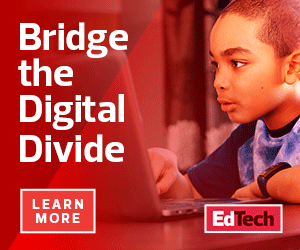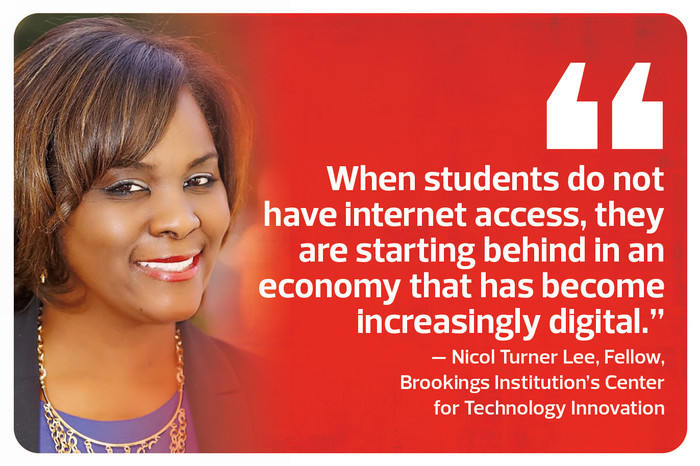EDTECH: Research about the effects of screen time varies widely. How would you characterize this issue and the effort to balance technology in schools?
TURNER LEE: I’ve had this debate with higher-income parents trying to take tablets away from their kids and make the case that screen time overall is not helpful. I believe that often the conversation around screen time is done from a middle-class perspective. As a result, we forget that not all children have access to internet-enabled hardware.
What COVID-19 has revealed is that, in our important conversations around this topic, we may be missing a few factors, including what access looks like for lower-income students and how many types of devices they have available at home, such as a smartphone, tablet, PC or laptop. Research has found that these kids have less access to multiple devices within the home. Our ability to determine whether the kids in Silicon Valley have too much screen time versus the kids in certain parts of Anacostia in Washington, D.C., is really the question that this pandemic is surfacing for school districts struggling to engage in distance learning.
EDTECH: If intentionality is key to the effective use of educational technology, how can educators apply this in practice?
TURNER LEE: This is a moment for the educational community to figure out how technology can be complementary to the learning process — not replace parts of it. We’re learning that we still have much more research to do when it comes to students’ access to screens and students’ achievement when it comes to technology engagement in the classroom.
When I was in school, the textbook was our major resource. For these youth, it’s now the internet and a device. We’ve got to figure out ways to get one laptop or tablet to each child. This resource must be in their backpacks.
DISCOVER: Learn how to improve remote learning experiences.
EDTECH: Some educators have concerns about potential negative effects of screen time. Are these concerns legitimate?
TURNER LEE: Yes. Educators and parents still have to address the potentially dependent behaviors that young people acquire from constant use of technology. Without appropriate guardrails and guidelines, an imbalance between how much time they engage with technology and with one-on-one instruction will occur.
Any teacher will be challenged, as technology has certainly added to the distractions that we have in the world. I like the no-cellphone policies, which enforce the restriction of personal devices during school time. That allows the teacher to define how they want to use the devices, which I think is more productive.












